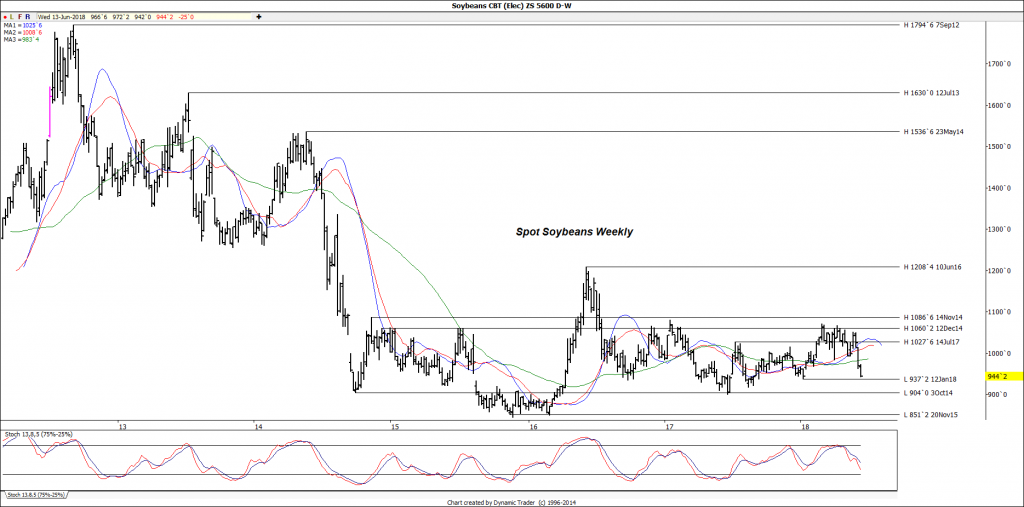By: Dan Hueber –
That is what I call a turn-around Tuesday, for the grain markets at least. Like giant mosquitos sucking the life-blood out of the corn bulls for weeks, the USDA estimates were just the right repellent to shoo those pesky bear insects away. Granted, there are plenty more of them out in the swampy low lands of fields across the Midwest, were no crops are left after the recent rains, but this should be enough to keep them at arm’s length until we have a little better understanding of the potential crop size. Realistically on the close Monday, we had eliminated any risk premium in the price of corn and as we know, some of the most critical growing days are yet ahead. I am not going to go into the nitty-gritty of the report but at the end of the via a bump in projected usage, ending stocks for 2017/18 were reduced 80 million and for the 18/19 season, 105 million. World corn ending stocks were trimmed by 4.46 MMT and take note that if correct, would be the lowest number recorded, 154.69 MMT, since the 2012/13 crop year and down 77 MMT from the peak just two years ago. It bares worth repeating that lower final supplies, particularly when they occur in consecutive years, should translate in the steady to higher prices and provide a wakeup call for potential production risks.
Looking solely at the domestic numbers you could make the same argument for the beans market, but the price response has been anything but similar. The USDA trimmed the 2017/18 ending stocks by 25 million bushels to 505 million and the 2018/19 crop 30 million to 385 million, but here we are this morning with nearby futures trading at the lowest level witnessed since January. The answer for this would appear to be at least two-fold. On the world report, the projected 2018/19 ending stocks were bumped up just slightly but it was an increase nevertheless. Yes, we are still looking at a year over year reductions and in fact the second year in a row of such, but at a 24.33% stock to usage ratio and the fact that this is still the third highest raw number on record, it takes a bit of supply concern away. Second, and the more likely cause of the current pressure is the fact that demand as a whole has shifted to Brazil and the current verbal trade war has not done any favors for US farm products.

That said, money will often trump politics when it comes to trade and just this morning we see an announcement of 177,000 MT of beans sold to unknown destinations. The majority of this, 172k, is for 2018/19, but could be reflective of our competitiveness again on the world stage. Finally, it should not be overlooked that we have weeks of growing risk ahead in this crop as well, which appears to have been lost on the bear for now. Markets do have a way of reminding us though.
Finally, we have wheat and to a large extent, a mixed bag of news. Domestically, the 2017/18 ending stocks were boosted by 10 million bushels to 1.08 billion but 2018/19 were trimmed by 9 million. Seeing that there was no change in the production figure, this means usage was boosted by 25 million, which is certainly not a negative. On the world stage, the 2018/19 ending stocks were increased 1.83 MMT but are still over 6 million down for the year. I have to believe that between the solid corn strength and the fact that there are enough weather issues globally to believe the projected output is too high, were enough to allow the positives to outweigh the negative.
Now that this report is in the history books, the market should refocus on the weather at hand, not to mention the technical position of markets. While I do believe unless we see develop a serious weather issue, we may already have witnessed the summer highs, particularly in corn and beans, but as oversold as we have become, I suspect we are in store for a decent corrective bounce. Of course, a little weather scare would help the cause immensely.